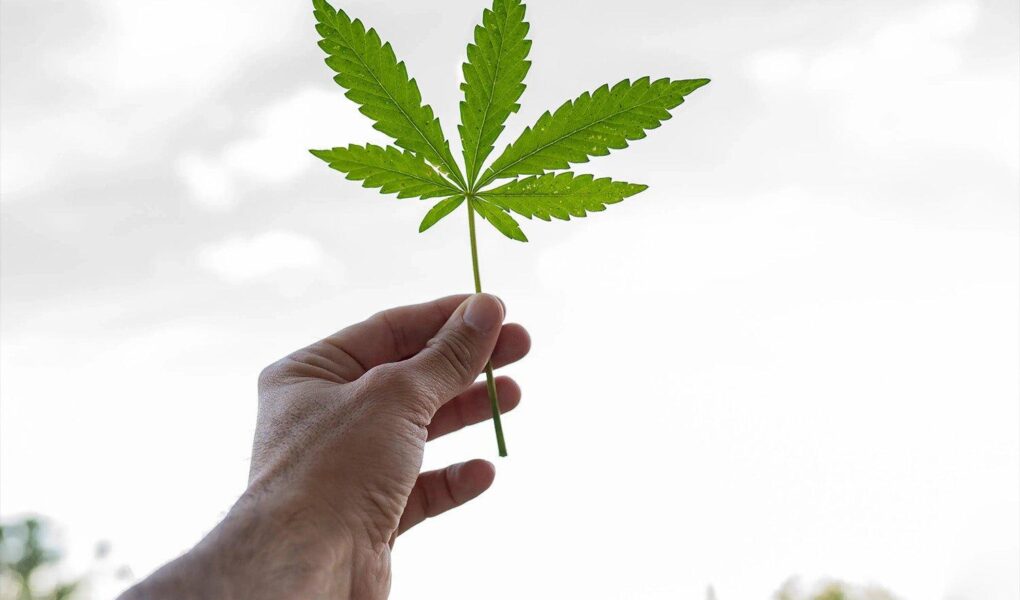Title: The Green Spectrum: A Guide to Marijuana Descriptions
As the world of cannabis blossoms from the shadows into the light of mainstream culture, the language we use to describe this versatile plant is evolving just as rapidly. Gone are the days of simplistic categorization; today, marijuana comes adorned with a tapestry of adjectives, each highlighting its unique traits, effects, and cultural significance. From the pungent aroma of earthy strains to the vibrant hues of their buds, the descriptions of marijuana encapsulate not just its physical characteristics but also its place in our social fabric. This article delves into the rich vocabulary that surrounds cannabis, exploring how these descriptions inform our perceptions, influence our choices, and contribute to the ever-growing conversation about this remarkable plant. Join us as we navigate the intricate landscape of marijuana descriptions, illuminating the nuances that make each strain a world unto itself.
Table of Contents
- Exploring Terpene Profiles and Their Unique Aromas
- Understanding Cannabinoid Potency for Informed Choices
- The Influence of Growing Methods on Marijuana Characteristics
- Choosing the Right Strain for Your Desired Experience
- Q&A
- The Way Forward
Exploring Terpene Profiles and Their Unique Aromas
Terpene profiles are the intricate tapestry of aromatic compounds found in cannabis that not only contribute to its unique scent but also influence its flavor and potential therapeutic effects. Each strain boasts a distinct combination of these terpenes, offering a sensory experience that can transport users through a myriad of fragrant landscapes. Limonene, with its vibrant citrus notes, often evokes feelings of joy and energy, while myrcene brings earthy, musk-like aromas, known for their calming and sedative properties. Exploring these scents is akin to wandering through a fragrant garden where each cultivar blooms with its own character.
The rich diversity of terpenes can also be organized into various profiles, providing insights into the potential effects users might expect. For a clearer understanding, consider the following table that presents common terpenes and their associated aromas and effects:
| Terpene | Aroma | Effects |
|---|---|---|
| Limonene | Citrus | Elevating, anti-anxiety |
| Myrcene | Earthy, musky | Relaxing, sedative |
| Pinene | Piney | Alertness, memory retention |
| Caryophyllene | Spicy, peppery | Anti-inflammatory, pain relief |
Understanding these profiles allows enthusiasts and medical users alike to select strains that not only appeal to their sense of smell but also align with their desired effects. Just as wine connoisseurs savor the complexity of varietals, cannabis aficionados can appreciate the depth of aroma that each terpene brings to the table, enhancing the overall experience of consumption.
Understanding Cannabinoid Potency for Informed Choices
When exploring the world of cannabinoids, understanding potency is crucial for making educated decisions. The potency of cannabis products is typically measured in percentage—specifically, the concentration of tetrahydrocannabinol (THC) and cannabidiol (CBD). These compounds not only contribute to the effects experienced but also influence the flavor profiles and overall experience of the strain. Different strains carry varying potency levels, from low to high, which can be reflected in their descriptions. Thus, checking lab results or product labels can help consumers navigate their choices more effectively.
To facilitate your understanding, here’s a quick reference table featuring key terms associated with cannabinoid potency:
| Term | Description |
|---|---|
| Low Potency | Typically contains less than 10% THC, ideal for beginners or those sensitive to psychoactive effects. |
| Moderate Potency | Ranges from 10% to 20% THC, providing a balanced experience suitable for moderate users. |
| High Potency | Features over 20% THC, often sought after for strong effects, though it may not suit everyone. |
| CBD Rich | Strains with high CBD content (often above 10%) that minimize psychoactive effects while providing therapeutic benefits. |
Knowing these classifications empowers users to choose products that align with their experience level and desired effects. Remember that individual reactions can vary, so it’s wise to start slow and gradually find your ideal potency. If you keep these aspects in mind while reading product descriptions, you are more likely to find the perfect cannabis strain that meets your needs.
The Influence of Growing Methods on Marijuana Characteristics
The way marijuana is cultivated has a profound impact on its overall characteristics, including flavor, potency, and therapeutic properties. There are several methods of growing marijuana, each contributing uniquely to its profile. For instance, indoor growing allows for precise control over environmental variables, resulting in consistent potency and vibrant flavors. Conversely, outdoor cultivation tends to harness the natural sunlight, creating exceptionally rich and complex profiles often marked by earthy tones and fruity notes. Factors such as soil quality, nutrient availability, and the surrounding ecosystem also play critical roles in determining the final product.
Different cultivation techniques, such as hydroponics, soil growing, and aeroponics, further influence the plant’s characteristics. Each method presents its own set of advantages and challenges, which can result in notable variations in the marijuana’s traits. Here’s a brief overview:
| Growing Method | Characteristics |
|---|---|
| Indoor | High control, consistent results, diverse cannabinoid profiles |
| Outdoor | Natural flavors, larger yields, seasonal variations |
| Hydroponics | Faster growth, high potency, complex terpene profiles |
| Aeroponics | Efficient nutrient absorption, robust plant health, enhanced flavors |
Ultimately, the choice of growing method shapes not only the chemical composition of the marijuana but also influences the consumer experience. As the industry continues to evolve, growers are finding innovative ways to blend traditional techniques with modern technology, leading to a new era of marijuana cultivation that emphasizes quality and uniqueness.
Choosing the Right Strain for Your Desired Experience
When it comes to selecting a cannabis strain, understanding the effects and characteristics associated with each type can greatly enhance your experience. With a myriad of options available, it’s essential to consider what you aim to achieve—be it relaxation, creativity, or increased focus. Different strains fall into categories like Indica, Sativa, and Hybrid, each presenting distinct benefits. For example, if you seek restful sleep or pain relief, Indicas are revered for their calming effects. On the other hand, Sativas might be your go-to if you’re looking to boost your mood and engage in social activities. Hybrids combine the best of both worlds, offering a balanced effect that can suit a variety of preferences.
Another crucial aspect is the terpenes present in each strain, which influence not only the aroma but also the strain’s overall experience. Familiar terpenes include Myrcene, Limonene, and Caryophyllene, each lending a unique flavor profile and effects. A deeper understanding of these components can help you tailor your selection. Here is a simple table summarizing common strains and their effects:
| Strain | Type | Effects |
|---|---|---|
| Blue Dream | Hybrid | Relaxation, Euphoria |
| Girl Scout Cookies | Hybrid | Happiness, Hunger |
| Sour Diesel | Sativa | Energetic, Uplifting |
| Granddaddy Purple | Indica | Sleep, Relaxation |
Q&A
Q: What are marijuana descriptions, and why are they important?
A: Marijuana descriptions refer to the detailed characteristics of different cannabis strains, including their aroma, flavor, effects, and appearance. These descriptions are essential for consumers and connoisseurs alike, as they help people understand the unique qualities of each strain, enabling informed consumption choices and tailoring experiences to individual preferences.
Q: How do the aromas and flavors of marijuana strains vary?
A: The aromas and flavors of marijuana strains can range from fruity and floral to earthy and spicy. These variations come from the strain’s unique terpene profile, which is influenced by its genetics. For instance, some strains may have a citrusy scent reminiscent of oranges, while others might exhibit piney or diesel-like notes. This diversity enables users to find a strain that appeals to their sensory tastes.
Q: What effects can be expected from different marijuana strains?
A: Different strains of marijuana are known to produce varying effects based on their cannabinoid and terpene profiles. Indica strains often offer relaxing effects, making them ideal for unwinding after a long day, while sativa strains tend to provide uplifting and energetic experiences, suitable for socializing or creative endeavors. Hybrid strains can offer a mix of both, catering to a broader spectrum of effects.
Q: Is there a standard way to describe marijuana strains?
A: While there isn’t a universal standard for describing marijuana strains, there are common elements that many cultivators, dispensaries, and consumers consider. Descriptions typically include the strain name, type (indica, sativa, or hybrid), appearance (bud size, color, and density), aroma, flavor profile, and expected effects. This organized approach helps create a clearer understanding of each strain.
Q: How can a consumer choose the right strain based on descriptions?
A: Consumers can choose the right strain by first identifying their desired effects, such as relaxation, creativity, or pain relief. They should then examine strain descriptions for information on aroma and flavor, as personal preference plays a significant role in enjoyment. Additionally, considering the THC and CBD levels associated with a strain can guide consumers in finding the appropriate potency for their needs.
Q: Are there any risks in relying solely on marijuana descriptions?
A: Yes, relying solely on marijuana descriptions can pose risks, as individual experiences with cannabis can differ significantly based on a variety of factors, including personal tolerance, set, and setting. Description accuracy may vary from one source to another, so it’s wise to consider trying small amounts first and, when possible, consult with knowledgeable budtenders or medical professionals for guidance tailored to individual needs.
Q: Can marijuana descriptions evolve over time?
A: Absolutely! Marijuana descriptions can evolve due to a variety of factors, including advancements in cultivation techniques, genetic crossbreeding, and changing consumer preferences. As new strains are developed and researched, descriptions can become more refined, offering a richer understanding of cannabis and its effects.
Q: What role do consumer reviews play in enhancing marijuana descriptions?
A: Consumer reviews play an invaluable role in enhancing marijuana descriptions, as they provide firsthand accounts of experiences with particular strains. Users often share unique insights into effects, flavors, and aromas that may not be captured in professional descriptions, adding depth and diversity to the understanding of each strain. This communal knowledge helps prospective consumers make better-informed decisions.
The Way Forward
the intricate world of marijuana descriptions embodies a rich tapestry of aromas, flavors, and effects, each strain telling its own unique story. As we navigate the diverse landscape of cannabis, understanding the nuances in terpene profiles, cannabinoid levels, and growing conditions can vastly enhance our appreciation for this multifaceted plant. Whether you’re a seasoned connoisseur or a curious newcomer, taking the time to explore and savor the characteristics of different strains can unlock new dimensions of experience. So, as you embark on your own journey through the world of marijuana, remember that every bud offers a chance to discover, learn, and connect—both with the plant and yourself. Happy exploring!



